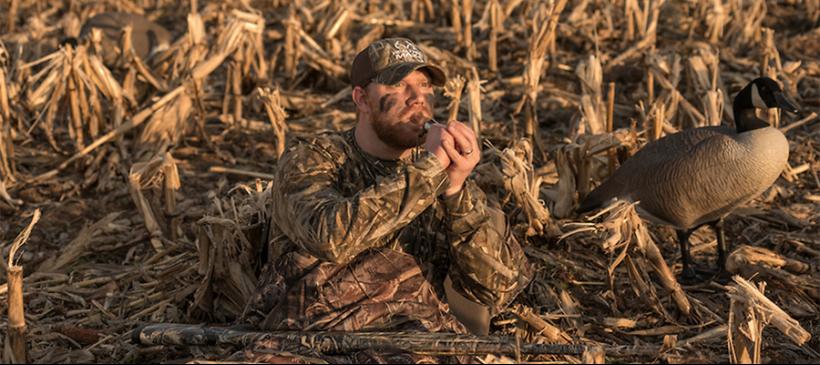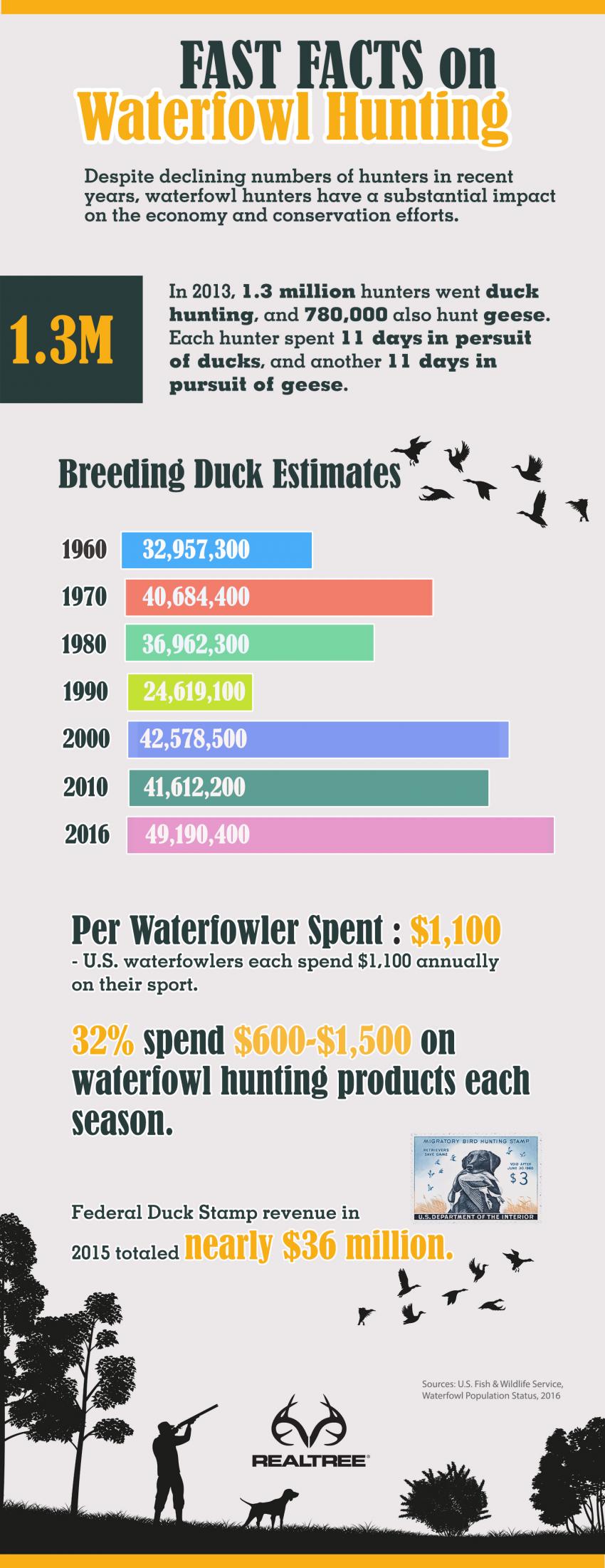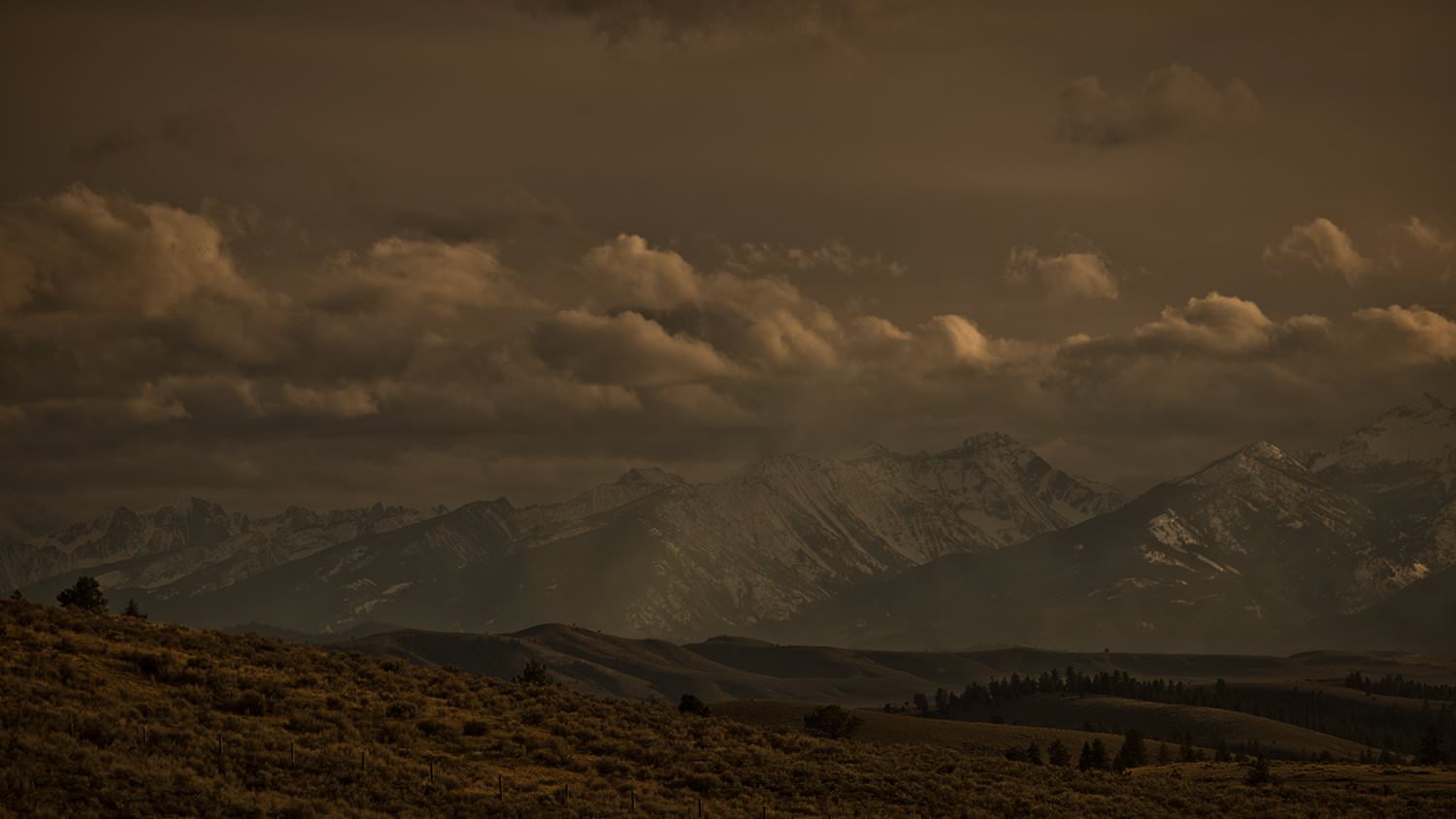Pondering U.S. Waterfowl Hunting Numbers
- December 4, 2017
- By Team Realtree
- Research, Infographics

Waterfowl hunting numbers today are a paradox. While the duck population was estimated at an extremely healthy 49.1 million birds in 2016, the number of duck hunters has plummeted during the past several decades. In 2015 (the most recent year for which information is available), the number of U.S. duck hunters came up just shy of 1 million, about half the number of hunters as there were in 1970.
In the past, it wasn’t unusual to see hunter numbers move up and down in response to duck population reports, but the number of hunters in the waterfowl marshes and fields has been on a slow decline almost every year since 1997. This, even though the United States Fish & Wildlife Service duck population survey has exceeded 45 million every year since 2011.
Despite the declines, it’s worth noting the substantial contribution that waterfowlers make to conservation and the economy. In 2013, according to a National Shooting Sports Foundation report on hunter demographics and expenditures, each U.S. waterfowler spent an average of $1100.
In 2015, the sale of 1,595,000 Federal duck stamps generated $35,887,500. (Typically 15-20% of duck stamp sales are attributed to non-hunters, i.e. collectors, National Wildlife Refuge visitors, etc.). It’s worth pausing to consider the impact of duck stamp sales. Since 1934, more than 5.5 million acres of waterfowl habitat have been acquired for the National Wildlife Refuge System through duck stamp revenue totaling $930,742,000 (through 2015).
Every waterfowl hunter age 16 and older is required to purchase the $25 stamp. When fewer hunters purchase their stamp, it takes away from funding for conservation programs.
What’s on the horizon for waterfowl hunting? Only time will tell. But the current situation spotlights the importance of hunter recruitment. If ever there has been a time to take a kid hunting for ducks and geese, this is it.

Editor’s Note: Realtree licenses 27,000 products that can be found in more than 38,000 retail locations worldwide. Whether customers are looking for rugged outdoor equipment or everyday gear that enhances their active lifestyle, it can be found in a Realtree pattern. If you’re interested in growing your business with a Realtree licensing program, let’s talk! Find out more and contact us here.
